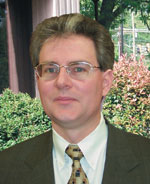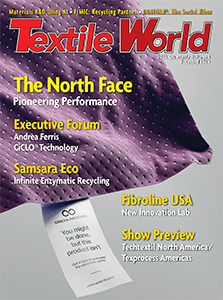RESEARCH TRIANGLE PARK, N.C. — February 9, 2016 — AATCC Foundation Inc. is currently accepting applications for all scholarships, including four new scholarships. Unless otherwise noted, all applications are due March 31, 2016.
Scholarship recipients receive half of the award for the fall semester, and half for the spring semester. Applications for these scholarships can be downloaded on the AATCC Foundation website. Eligibility for AATCC Foundation scholarships varies, see the specific scholarship online for rules and eligibility.
NEW – GORDON AND MARJORIE OSBORNE SCHOLARSHIP is a $2,000 per year scholarship that would support an undergraduate level college student attending (or accepted into) an accredited university, who is enrolled in a textile-related program, and whose career goals are in the fields of textile engineering, textile chemistry, textile science, or a related discipline.
NEW – KANTI & HANSA JASANI FAMILY TEXTILE SCHOLARSHIP is a $1,500 scholarship available to Indian students, specifically Indian citizens with a student visa or with permanent residency, who are attending a US university with an AATCC student chapter. The student should be pursuing a career in a field involving textile engineering, textile technology, textile chemistry, textile science, or a related discipline.
NEW – URI SCHOLARSHIP is a $1,000 scholarship for undergraduate students studying Textile Fashion, Merchandising and Design at the University of Rhode Island. The URI Scholarship is based on a student’s citizenship, need, and academic expectancy.
NEW – TEXTILE SCHOLARSHIP is a $2,000 scholarship intended for undergraduate students taking textile and related courses. This scholarship is based on a student’s citizenship, need, and academic expectancy. As many as four scholarships may be rewarded.
Charles H. Stone Scholarship is a $6,000 scholarship for qualifying textile chemistry students and related fields of study to juniors and seniors at Clemson University and NC State University. The scholarship committee contacts the university representatives directly for applicants.
Charles E. Gavin III Family Scholarship offers $3,000 scholarships to students in textile, polymer, and chemical engineering at Georgia Institute of Technology and Auburn University. Both universities match this scholarship, doubling the amount of the scholarship.
The Color Solutions International Textile and Apparel Design Scholarship is for undergraduate students studying textile and apparel design. The CSI Scholarship Committee will choose two recipients for this scholarship, and each recipient will receive a $5,000 scholarship.
The Corporate Member Scholarship is a $2,000 scholarship intended for the children of AATCC corporate member employees. In particular, this scholarship focuses on high school seniors who are applying for acceptance at a college or university, and plan to study textile related topics. The scholarship recipient must attend a college or university that has an AATCC student chapter.
The Metro Scholarship offers $3,000 in scholarships targeted to undergraduate students pursuing a degree in a textile field at a university or college with an AATCC student chapter in the New England, New York and New Jersey areas. The Metro Scholarship is intended for qualifying university students, based on need and academic expectancy.
The West Region Scholarship is a $2,000 scholarship intended for rising juniors or seniors pursuing an undergraduate degree in a textile or fashion-related field of study at a public college or university with an active AATCC student chapter in the AATCC West Region.
The Nonwovens Institute Undergraduate Student Scholarship
AATCC Foundation, in collaboration with The Nonwovens Institute, offers The AATCC Foundation Nonwovens Institute Undergraduate Student Scholarship in the amount of $2,500. This scholarship is offered to US citizens or permanent residents, who are currently juniors or rising seniors majoring in fiber and polymer sciences, textiles, materials science, paper science, chemical engineering or related disciplines.
Posted February 9, 2016
Source: AATCC





